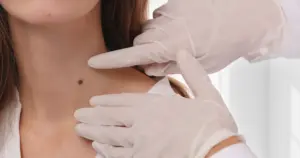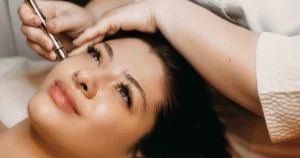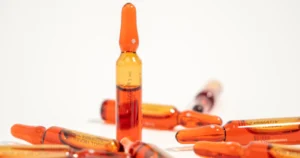Microdermabrasion is a non-invasive skin rejuvenation procedure involving a diamond-tipped wand or a stream of fine crystals to exfoliate the skin’s surface layer. It’s an excellent treatment for various skin conditions such as acne, wrinkles, fine lines, hyperpigmentation, and sun damage.
This article will explore the different skin conditions that can benefit from microdermabrasion and how the treatment works. Read until the end and discover if microdermabrasion can also work for you.
What is Microdermabrasion?
Microdermabrasion utilizes an abrasive tip to remove accumulated dead cells, deeply exfoliate and purify every pore. Microdermabrasion mixed with some of the top products nowadays can be an excellent treatment for skin affected by seasonal changes in dryness in winter. Microdermabrasion works best for the following:
- Diminish the appearance of fine lines and wrinkles.
- Improve the appearance of aging, thickened skin.
- Help repair sun-damaged skin.
- Refine pores.
- Encourage softer, smoother skin.
- Reduce the formation of scar tissue.
How Microdermabrasion Works
Microdermabrasion is a non-invasive procedure that uses a diamond-tipped wand or a stream of fine crystals to exfoliate the skin’s surface layer. The process is painless and doesn’t require any downtime. It’s a quick treatment that can be done in less than an hour.
Before the procedure, the skin is thoroughly cleansed, and practitioners may apply numbing cream to reduce discomfort. The diamond-tipped wand or crystals are passed over the skin’s surface, removing dead skin cells and stimulating collagen production. After the procedure, a moisturizer and sunscreen are applied to protect the skin from the sun’s harmful rays.
The Procedure
Microdermabrasion is a non-invasive cosmetic procedure involving a specialized tool to exfoliate the outermost layer of dead skin cells, revealing smoother and brighter skin. It’s a popular treatment that can improve the appearance of fine lines, wrinkles, sun damage, age spots, acne scars, and other skin imperfections. Here’s a step-by-step guide to the microdermabrasion procedure:
Step 1: Consultation
Before the treatment, consult a licensed aesthetician or dermatologist to determine if you’re a suitable candidate for microdermabrasion. They’ll ask about your skin concerns, medical history, and any medications you’re taking to ensure the treatment is safe and effective. They’ll also explain the procedure, its benefits, and what to expect during and after the treatment.
Step 2: Skin Preparation
On the day of your appointment, you’ll be asked to remove any makeup and jewelry, and experts will cleanse your skin to remove any oils, dirt, or debris. Some practitioners may apply a pre-treatment solution or numbing cream to the skin to make the procedure more comfortable.
Step 3: Microdermabrasion Treatment
For microdermabrasion, the aesthetician or dermatologist will use a handheld device that sprays tiny crystals or a diamond-tipped wand to exfoliate the top layer of skin gently. The device will be moved across your face in a circular motion, focusing on areas of concern such as wrinkles, fine lines, and acne scars. The procedure can take between 30 and 60 minutes, depending on the size of the treatment area and the severity of your skin concerns.
Step 4: Post-treatment Care
After the treatment, your skin may be red, tender, and slightly swollen, but this should subside within a few hours. Your aesthetician or dermatologist will apply a moisturizer or soothing cream to your skin to minimize discomfort and promote healing. You’ll be advised to avoid sun exposure, harsh skin products, and abrasive scrubs for a few days following the treatment and to use a broad-spectrum sunscreen to protect your skin from UV damage.
Step 5: Follow-up Appointments
You may need multiple microdermabrasion sessions spaced several weeks apart for optimal results. Your aesthetician or dermatologist will recommend a treatment plan based on your skin type, concerns, and desired outcome. They’ll also monitor your skin’s response to the treatment and adjust the intensity and frequency of the sessions as needed.
In conclusion, microdermabrasion is a safe and effective way to improve the appearance of your skin. Following these steps and working with a licensed professional can achieve a smoother, brighter, and more youthful-looking complexion.
Benefitting Skin Conditions
Acne
Microdermabrasion is an effective treatment for acne-prone skin. It helps remove dead skin cells and unclog pores, reducing the occurrence of pimples and blackheads. The procedure also promotes the growth of new skin cells, which can improve the texture and tone of the skin. For individuals with active acne, waiting until the acne is under control is best before having a microdermabrasion treatment.
Fine Lines and Wrinkles
Microdermabrasion can help reduce the appearance of fine lines and wrinkles. The procedure stimulates collagen production, a protein that gives the skin elasticity. As we age, collagen production decreases, and the skin loses its elasticity, resulting in wrinkles and fine lines. Microdermabrasion promotes collagen production, which can help improve the appearance of wrinkles and fine lines.
Hyperpigmentation
Hyperpigmentation is a common skin condition that results from the overproduction of melanin in the skin. Sun damage, hormonal changes, or skin injuries can cause it. Microdermabrasion can help reduce hyperpigmentation by exfoliating the skin’s surface layer and removing dead skin cells. The procedure also promotes cell turnover, which can help fade dark spots and even out skin tone.
Sun Damage
Excessive sun exposure can cause sun damage, which includes wrinkles, fine lines, age spots, and uneven skin tone. Microdermabrasion can help reduce the signs of sun damage by exfoliating the skin and promoting the growth of new skin cells. The procedure can also help fade age spots and improve the texture and tone of the skin.
Overview
Microdermabrasion is commonly used to treat various skin conditions, such as acne, sun damage, fine lines and wrinkles, hyperpigmentation, and uneven skin tone. It is also an effective way to reduce the appearance of scars and stretch marks. The procedure typically takes 30 minutes to an hour, depending on the treated area.
One of the benefits of microdermabrasion is that it requires no downtime, and patients can return to their normal activities immediately after the procedure. However, avoiding direct sunlight and using sunscreen for a few days following the treatment is essential.
Overall, microdermabrasion is a safe and effective cosmetic procedure that can improve the look and feel of the skin. It is suitable for all skin types and can be used alone or in combination with other treatments for optimal results.
The Bottomline
Microdermabrasion is an excellent treatment for various skin conditions such as acne, wrinkles, fine lines, hyperpigmentation, and sun damage. The procedure is non-invasive, painless, and requires no downtime. It exfoliates the skin’s surface layer and promotes collagen production, resulting in smoother, brighter, and more even-toned skin. If you’re considering microdermabrasion, consult a qualified skincare professional to determine if it’s the proper treatment for your skin condition.
Do you want to experience microdermabrasion? Our awesome Amara Rejuve Medical Spa and Laser friends can help you today. Visit them now







